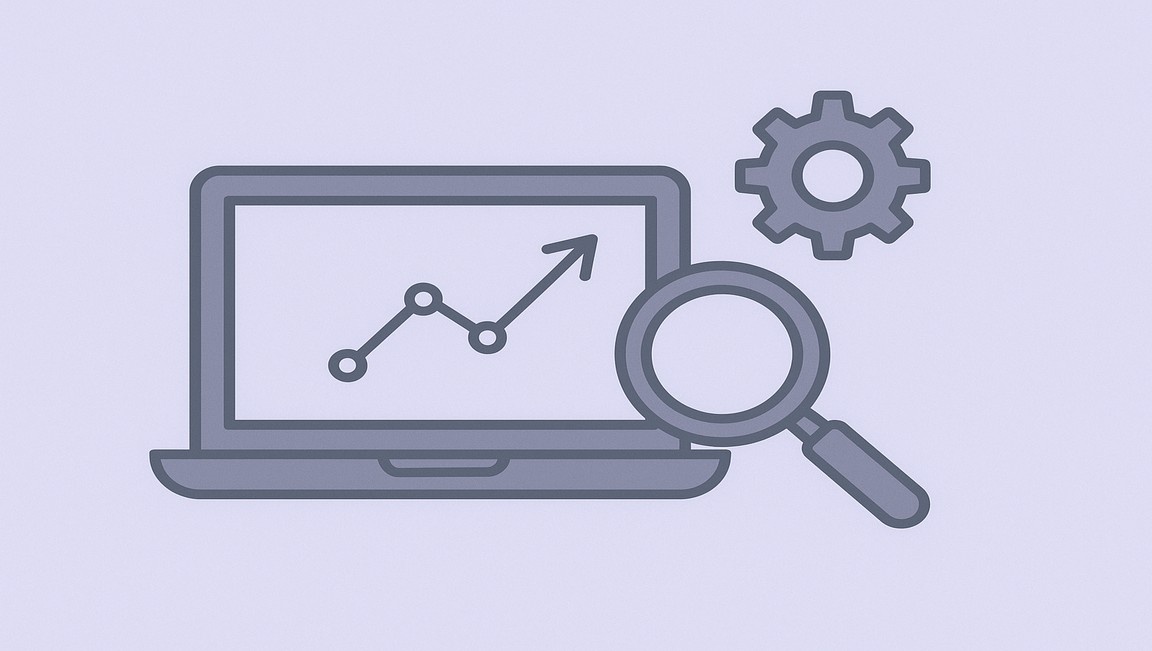Table of content
SHARE THIS ARTICLE
Is this blog hitting the mark?
Contact Us
Table of Contents
- Why Quality Isn’t a Nice-to-Have in SaaS - It’s a Growth Lever
- The SaaS Quality Maturity Curve
- Phase-Wise Testing Strategy: What to Introduce and When
- Your Actionable Playbook: Step-by-Step for the CTO / Founder
- People & Process Setup – Optimised for a 20-30 Person Team
- Metrics That Actually Move the Needle
- Why This Matters Now
- Final Thought
Why Quality Isn’t a Nice-to-Have in SaaS - It’s a Growth Lever
In a SaaS company of 20-30 people, you’re past the “let’s build everything fast” phase. You’ve found some product-market fit. You may have early paying customers. Your product is live, and each release risks your brand. That’s when the unseen enemy strikes: quality debt.
Bugs. Performance slumps. Onboarding flows breaking. Your team rushing to fix things instead of building new value. These issues don’t just hurt your engineering velocity — they erode trust, increase churn, raise support costs, and slow growth.
Speed without control is a trap. You can ship fast, but if you ship unstable, you pay twice: first in defect fixes, second in lost reputation. The right move is to build a testing strategy aligned with your stage — lean, but intentional.
In this article you get a full-blown playbook: which types of testing to apply at which phase, and a concrete step-by-step plan you can follow now.
Also Read: Exploratory Testing: Unlocking Creativity in Manual QA
The SaaS Quality Maturity Curve
A helpful way to think: your product and team evolve through phases. Each phase has distinct challenges and you’ll need slightly different types of testing. Here’s a breakdown:
You might be currently in Stabilization or heading into Expansion. The key: don’t apply “everything everywhere” — pick the right testing types for your current stage.
Phase-Wise Testing Strategy: What to Introduce and When
Below, I walk you through each phase, what your goal should be, what testing to implement, and what you can defer.
Phase 1 – Foundation (MVP stage)
Goal: Validate core user journeys, deliver value quickly, minimise rework.
Testing you should implement now:
- Smoke and sanity tests (manual): For each deploy, focus on 3-5 core flows (signup, login, billing, a main feature). Ensure nothing major is broken.
- Unit tests for critical logic: Authentication, billing, data layer. Don’t automate everything — only high-risk areas.
- API contract tests: Use Postman, or a lightweight framework to test key endpoints.
- Error monitoring/logging: Bring in tools like Sentry or Rollbar early so you catch issues in production before they escalate.
Testing you can defer:
- Full UI regression automation (UI will change a lot, automation would cost more than benefit).
- Large-scale performance or security testing (you’re still validating product-market fit).
Why this works: Early on, you’re changing quickly. Keep testing lightweight, fast, and high-value
Phase 2 – Stabilization (~6-12 months)
Goal: Protect what’s working. You have users who expect reliability. You need to reduce chaos.
Testing to bring in:
- Manual regression suite: Use a test-case tool (TestRail, Qase) to formalise the most important flows.
- Automated smoke suite: Pick 10-20 critical flows and automate them (UI or API depending on your stack) so you get fast feedback.
- Integration tests: Verify core services/components work together (API ↔ DB ↔ UI).
- CI/CD integration (smoke tests): On every merge or deploy, run your smoke suite automatically.
- Dedicated QA environment: Separate from dev and staging, to reduce noise.
What to delay:
- Full test automation coverage across all features.
- Advanced performance/security frameworks (you can plan for them but execute later)
Why: At this stage you’re still building features and you must minimise risk. The testing layers you add should protect your backbone.
Phase 3 – Expansion (~12-24 months)
Goal: Scale complexity. More modules, integrations, tenants, performance demands. Quality must be baked in, not bolted on.
Testing to introduce:
- Test automation framework: Build a scalable UI + API test framework (Page-Objects, service layer, reusability).
- Performance testing: Load, stress testing for key APIs/features. As usage grows, you must validate scalability.
- Security testing: Penetration testing, vulnerability scans, role/access testing. SaaS implies multi-tenant risk.
- Data consistency testing: Ensure API outputs equal DB state equal UI display.
- Tight CI/CD pipelines: Automate all major test suites in your deploy pipeline.
What to delay:
- AI-driven autonomous testing (not yet mature for many teams).
Why: At this stage you must engineer for quality as part of delivery. The overhead of testing pays dividends.
Phase 4 – Scaling (~24-36+ months)
Goal: Quality becomes a velocity enabler. You serve many users/devices, perhaps global rollout. Testing must support high velocity + reliability.
Testing to bring in:
- Quality metrics & dashboards: Test coverage, defect leakage (prod bugs), build health, test flakiness.
- Cross-browser/device automation: SaaS is accessed from many devices; compatibility matters.
- Contract testing between microservices (if you have them): Services need to guarantee interfaces.
- Release-check health automation: Synthetic monitoring post-deploy to validate key user flows work in production. Real-user monitoring helps too.
What to defer:
- Cut-edge research/testing methods unless you have dedicated QE team.
Why: You’re scaling user-base, platform and team. You need visibility, automation, and control rather than just fire-fighting.
Phase 5 – Optimization (Mature SaaS)
Goal: Quality is a differentiator. You compete on stability, speed, experimentation, innovation.
Testing at this stage:
- AI/ML-powered testing: Self-healing locators, autonomous regression, predictive defect analytics.
- A/B test validation automation: For experiments you must ensure you measure business outcomes and test them.
- Shift-left analytics: Quality data embedded into planning, not just after the fact.
- Customer-journey monitoring: Synthetic tests for onboarding, upsell/renewal flows, global performance.
Why: At this scale you can no longer afford manual overhead. Quality must be baked into every pipeline, every team, every release.
Also Read: The QA Playbook: Aligning Testing Types with Lifecycle Phases
Your Actionable Playbook: Step-by-Step for the CTO / Founder
Here is your execution checklist. These are the concrete actions you should take now (or soon) with your ~20-30 person SaaS team.
People & Process Setup – Optimised for a 20-30 Person Team
Your team is lean. You cannot have large standalone quality teams. Quality must live in the delivery process. Here’s a recommended structure:
- QA Engineers – 2-3 people. Focus on manual/ exploratory testing, regression oversight.
- Automation Engineers – 1-2 people. Build automation frameworks, maintain pipelines.
- DevOps/CI Engineer – 1 person. Manage CI/CD, test integration, environments.
- Product Owner / Manager – 1 person. Responsible for acceptance criteria, core journey definitions.
- CTO / Head of Engineering – you. Own quality KPIs, governance, strategy.
- Suggested weekly rhythm:
- Monday: Sprint planning. QA defines acceptance tests for upcoming stories. Automation backlog reviewed.
- Wednesday: Mid-sprint check. Are new flows being test-covered? Automation progress? Any high-risk areas?
- Friday: Build health report. Review failures, test coverage, new defects, trend lines. Raise flags early.
Embed the mindset: “if it’s not tested, it’s not done”. Feature shipped without acceptance criteria and regression coverage = unfinished work.
Also Read: Testing AI-Based Chatbot Applications: A Comprehensive Guide for Quality Assurance
Metrics That Actually Move the Needle
Vanity metrics (number of tests, hours spent in QA) don’t tell you much. Focus on business-relevant indicators:
You’ll note many of these metrics reflect risk reduction as much as speed. That is intentional. Your goal is not just “fast” but “fast + safe”.
Why This Matters Now
You’re at a crucial stage. With 20-30 people, you are capable of decent velocity — but you’re also susceptible to growing pains. One faulty release can cost much more than the feature you delivered.
Quality isn’t a line item in the budget. It’s a foundation for scaling. It lets you ship faster with confidence, reduce firefighting, build trust with customers, and invest more time in building new value rather than patching old mistakes.
If you ignore quality and lean only on speed, you’ll reach a point where shipping new features gets slower, risk increases, and every release becomes a gamble. That’s when growth stalls.
Final Thought
You’ve built the product. You’ve grown the team. You’re ready to scale. Now you need a testing strategy that matches your growth stage. A strategy that is contextually appropriate for ~20-30 people, not a “big enterprise” playbook.
Use this guide. Define your stage. Implement the right testing at the right time. Build visibility. Automate smartly. Measure what matters.
When you do this, your SaaS doesn’t just grow — it grows with quality, confidence, and resilience.
At QAble Testlab, we understand that as a SaaS founder or CTO of a 20-30 person team you’re juggling speed, quality, and growth all at once. That’s why we position ourselves not just as a vendor but as your quality partner: since 2018 we’ve helped startups and enterprises across dozens of industries reduce bugs by up to 85 % and accelerate release cycles with our proven testing methodology. With deep experience in SaaS-product delivery, automation frameworks (Selenium, Cypress, Playwright), API and performance testing, and a flexible engagement model that scales with your growth, we’re built to align with the phase-wise testing strategy you’ll read about in this blog. By integrating early, tailoring the scope to your growth stage, and delivering high-impact, low-overhead quality work, QAble becomes the best choice to implement the playbook you’re defining — allowing you to ship fast and with confidence.
Discover More About QA Services
sales@qable.ioDelve deeper into the world of quality assurance (QA) services tailored to your industry needs. Have questions? We're here to listen and provide expert insights


Viral Patel is the Co-founder of QAble, delivering advanced test automation solutions with a focus on quality and speed. He specializes in modern frameworks like Playwright, Selenium, and Appium, helping teams accelerate testing and ensure flawless application performance.
.svg)














.webp)
.webp)
.png)
.png)











.png)



.png)

.png)

.png)
















.webp)

